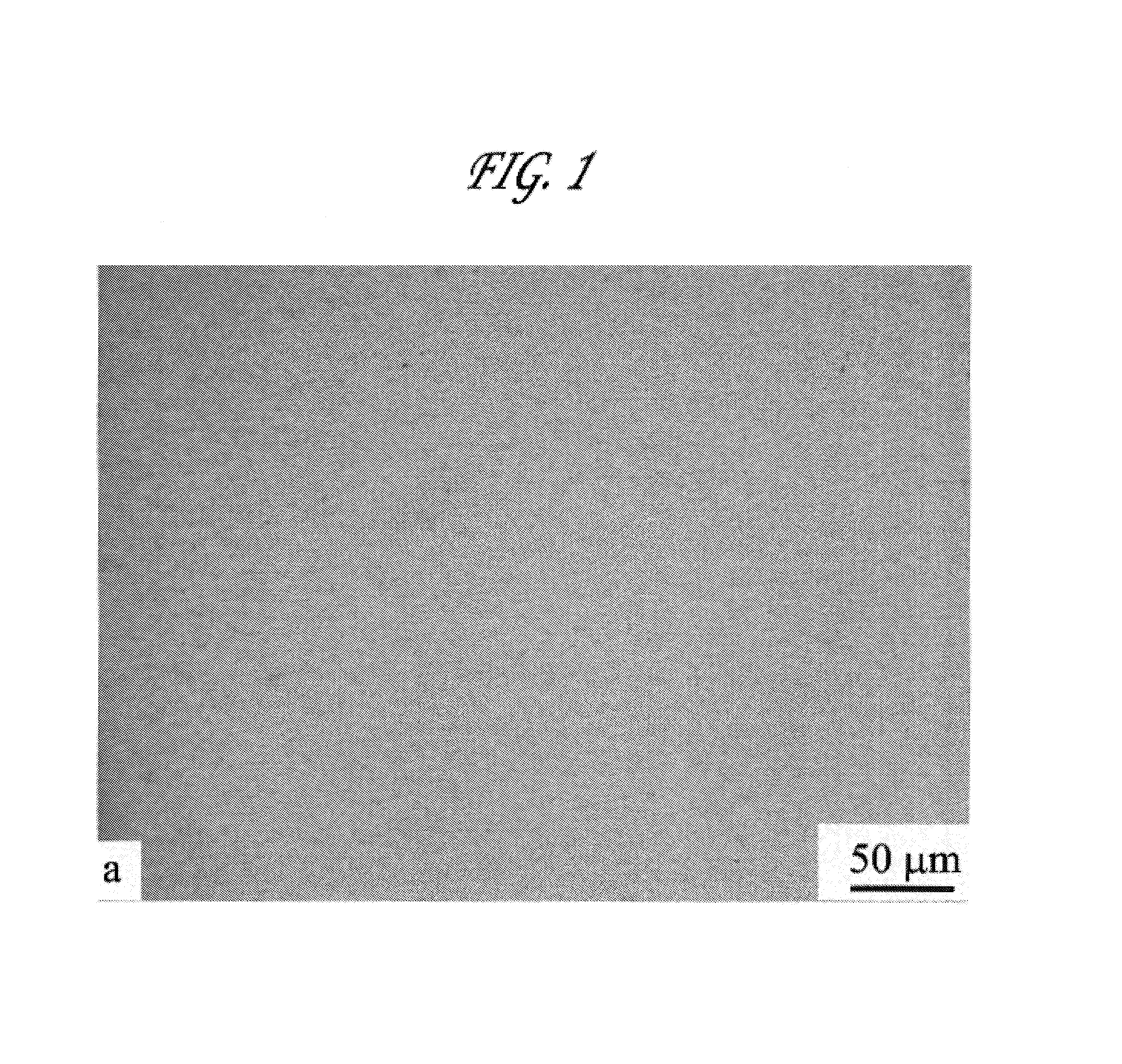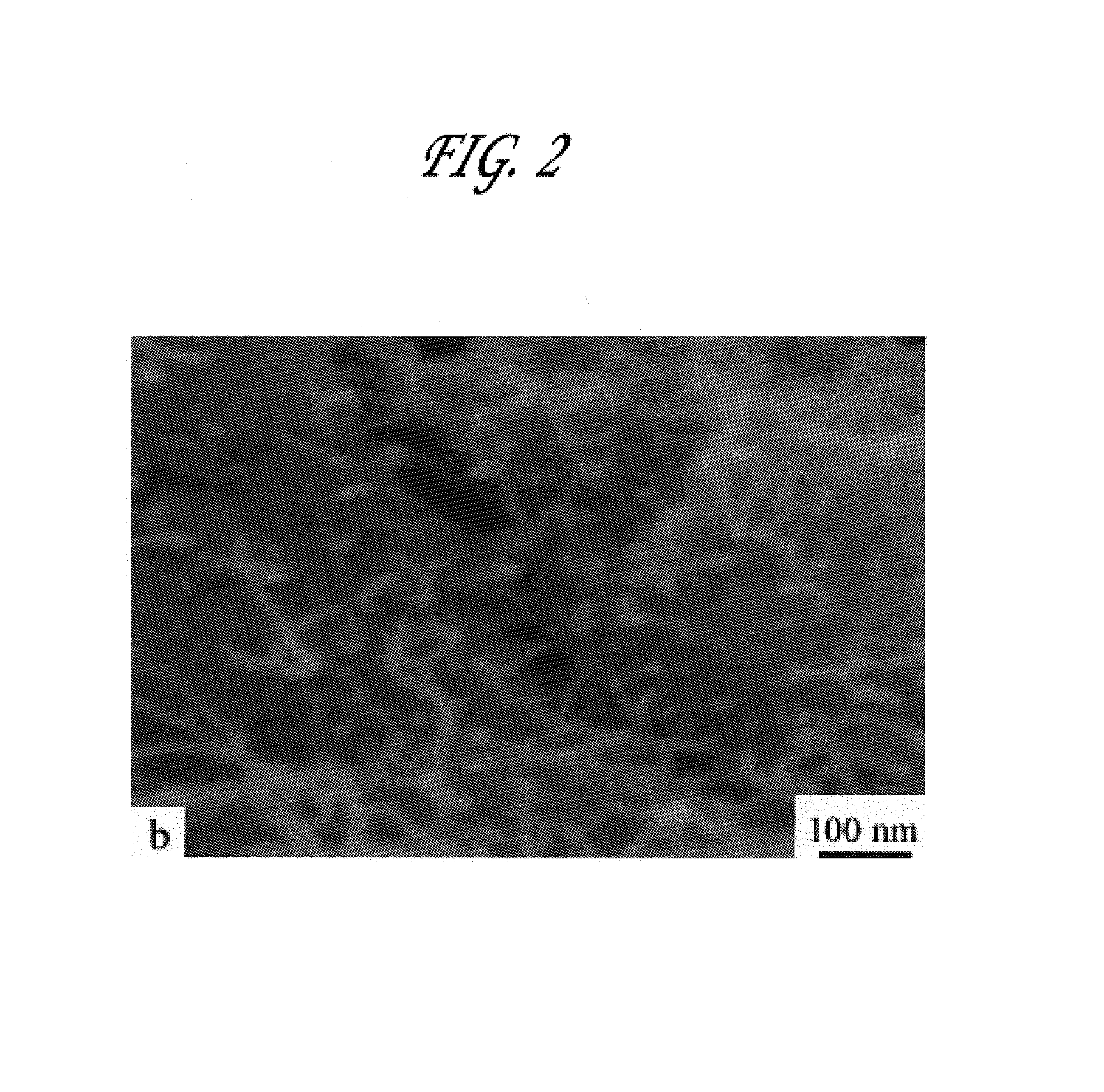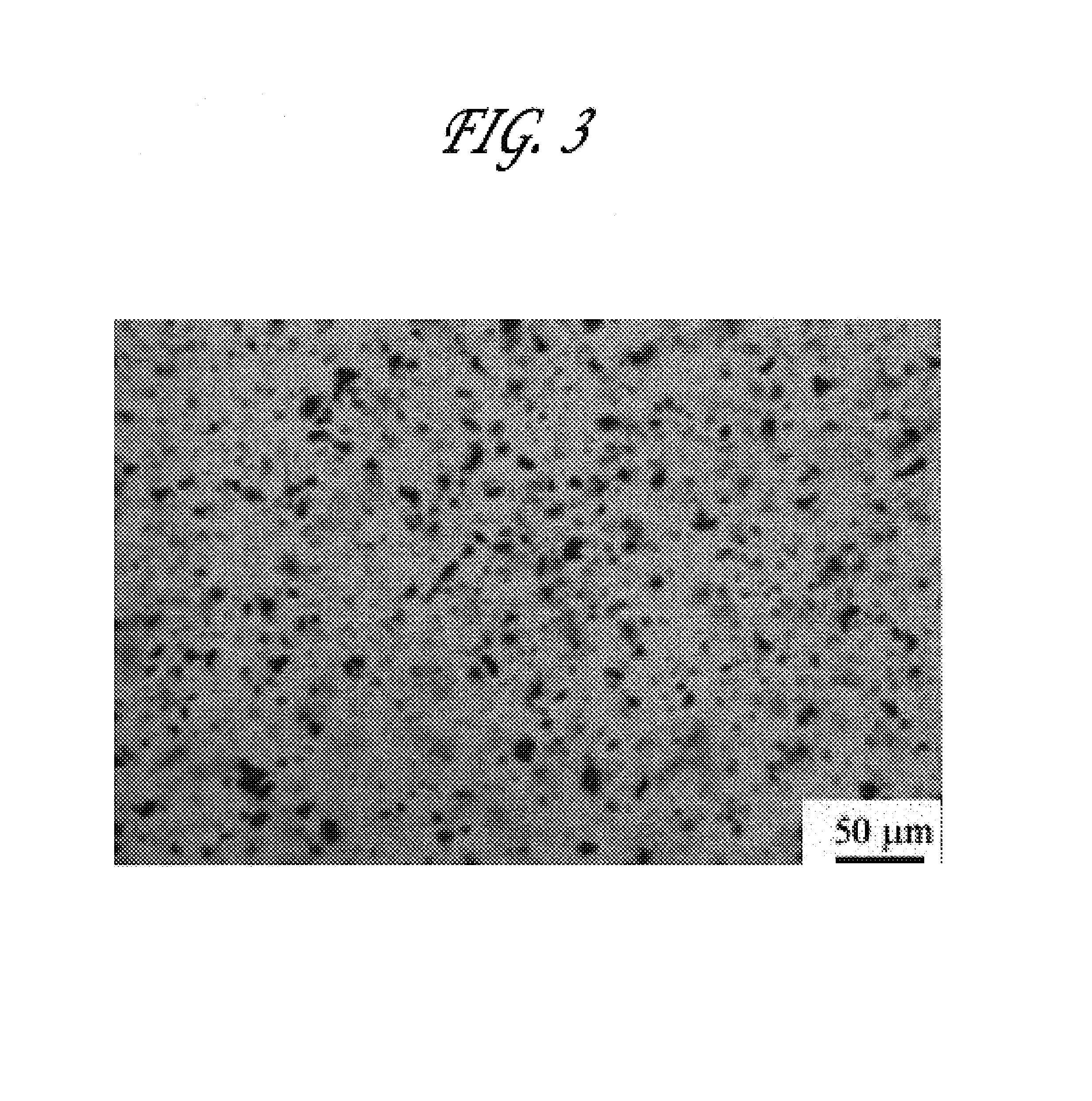Flame retardant nanocomposite
a technology of nanocomposites and flame retardants, which is applied in the direction of special tyres, transportation and packaging, tyre parts, etc., can solve the problems of prone to aggregation of swnts, many previous attempts to uniformly disperse swnts throughout a polymer matrix have not been fully successful, and achieve the effect of reducing the flammability of polymer compositions
- Summary
- Abstract
- Description
- Claims
- Application Information
AI Technical Summary
Benefits of technology
Problems solved by technology
Method used
Image
Examples
example 1
Production of SWNT Composites
[0034]Single-walled carbon nanotubes for the composites were produced by the HiPco method. The metal content of the SWNTs was about 8 wt % determined by thermal gravimetric analysis (TGA) using a TA Instruments SDT 2960 at 5° C. / min in air. Factors such as residual metal content, length, and alignment in the composite all affect the performance properties of the composite, depending on the intended use.
[0035]PMMA (poly(methyl methacrylate)) was procured from Polysciences Inc., Warrington, Pa., with an average molecular weight of 100,000.
[0036]SWNTs and PMMA were combined in DMF in the amounts necessary to form the desired weight percentage (“wt %”). For example to produce 1 wt % SWNT composite, 60 mg SWNTs and 5.94 g PMMA were added to 240 ml dimethylformamide (DMF). The mixture was then sonicated for 24 hours to obtain a good dispersion of SWNTs in the solvent. The homogeneous suspension was then dripped into a large amount of distilled water (VDMF:Vwat...
example 2
Characterization of Dispersion
[0038]The method of Example 1 was used to produce a 1 wt % SWNT composite. A hot press was used to prepare a film of ˜30 μm thickness which was observed with an optical microscope to determine SWNT dispersion. As shown in the optical micrograph in FIG. 1, there was no bundling or coagulation of SWNTs in the composite.
[0039]The method of Example 1 was used to produce a 7 wt % SWNT composite. The fracture surface was observed with a scanning electron microscope (“SEM”; JEOL 6300FV at 5 kV voltage) to determine SWNT dispersion. As shown in the SEM micrograph in FIG. 2, there was no bundling or coagulation of SWNTs in the composite.
[0040]If purification is undertaken, and if the purified SWNTs are completely dried before dispersion they will irreversibly aggregate, as shown in FIG. 3, where a 1 wt % SWNT composite made with completely dried purified SWNTs was made and observed with an optical microscope. Thus, purified SWNTs are best stored in some type of ...
example 3
Properties of Composites
[0042]The method of Example 1 was used to produce unaligned SWNT / PMMA composites in the weight percentages listed in TABLE 1. Pure PMMA polymer samples (0.0 SWNT wt %) were also produced by the same method, but without adding SWNTs.
[0043]Electrical conductivity was measured using either the conventional four-probe or conventional two-probe method at room temperature, the latter being used for electrical conductivities less than 10−8 S / cm.
[0044]Thermal stability was determined by thermal gravimetric analysis (TGA) using a TA Instruments SDT 2960 at 5° C. / min in air from 25° C. to 800° C. in air. All samples were ˜2.0 mm3. TABLE 1 reports the temperature of the maximum rate of mass loss.
[0045]
TABLE 1Electrical ConductivityThermal StabilitySWNT wt %(S / cm)(° C.)0.0 10−15311(theoretical value)0.1−123620.5−123711~10−113722 5 × 10−537251.4 × 10−437372.6 × 10−4373
[0046]A comparison of the mass loss rate curves between the pure PMMA polymer sample and the 0.5 wt % SW...
PUM
 Login to View More
Login to View More Abstract
Description
Claims
Application Information
 Login to View More
Login to View More - R&D
- Intellectual Property
- Life Sciences
- Materials
- Tech Scout
- Unparalleled Data Quality
- Higher Quality Content
- 60% Fewer Hallucinations
Browse by: Latest US Patents, China's latest patents, Technical Efficacy Thesaurus, Application Domain, Technology Topic, Popular Technical Reports.
© 2025 PatSnap. All rights reserved.Legal|Privacy policy|Modern Slavery Act Transparency Statement|Sitemap|About US| Contact US: help@patsnap.com



